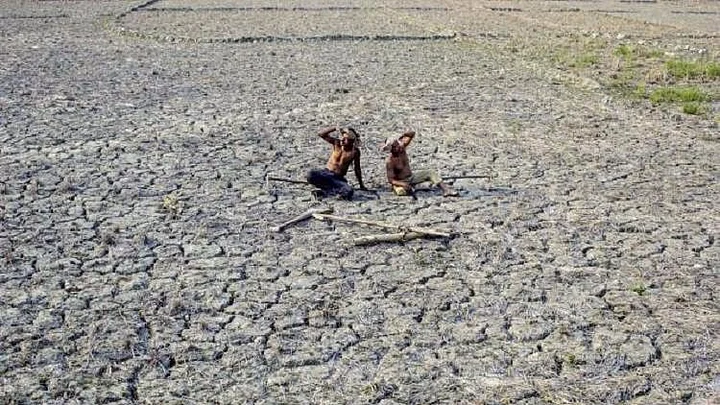In 42 years, Karnataka has not seen a drought so bad. Even the ragi crop, which requires little water compared to paddy and sugarcane, is now failing.
On 20 February, the water levels in the Krishna Raja Sagar (KRS) Dam – which provides drinking water to Bengaluru – hit an all-time low of 78.42 ft, of which only 5.71 ft can be used.
On the same day, the inflow of water in the dam stood at 105 cusecs, whereas the outflow was 242 cusecs.
If pre-monsoon showers fail, the KRS dam will soon reach dead storage – which is the water in the dam that cannot be used for any purpose.
As the threat of drinking water shortage for Bengaluru loomed large, Chief Minister Siddaramaiah had, on 19 February, announced that the Karnataka government would go ahead with the construction of the Mekedatu Dam.
The project, which was proposed in 2003, was put on hold due to severe opposition from Tamil Nadu. The Rs 5,130 crore project with a capacity of 66.50 tmcft, had been proposed to meet drinking water needs of Bengalureans.
The state government has submitted the proposal to the Cauvery Supervisory Committee and the Central Water Commission for approval.
How Has the Drought Affected Karnataka?
Thirsty fields and depleting groundwater have become common phenomena across the Cauvery basin, which includes Mysuru, Mandya, Hassan and Chamarajanagar districts in southern Karnataka.
Several water bodies in Raichur and the Hyderabad-Karnataka region have dried up. In Rajolli, located in Raichur, dead fish were piled up on the banks of a now-dry stream which used to flow into the village, media reports say.
In Nuggenahalli in Chennarayapatna taluk, over 400 cows have not been fed in the past week.
“Some of the cattle had wandered away and around 100 cows have died in the past 15 days,” said Kurubara Shantakumar, a member of the Karnataka Farmers’ Association.
“Farmers who bought cattle for Rs 20,000 per animal and are now selling them off for a mere Rs 3,000. There are around 70 bags of fodder lying unused and yet the cattle are going hungry,” Shantakumar said.
Agriculture has also been affected in the state. Only the rabi crop was sown on 4,700 hectares of land in 2016. Of this, 2,250 hectares of horsegram and 745 hectares of ragi failed completely, a report by The Hindu said.
As per estimates from the Karnataka State Natural Disaster Monitoring Centre (KSNDMC), a severe drinking water problem is looming over the state.
A chief engineer with the BWSSB said:
“The government will have to ration water if the pre-monsoon showers fail. In 2016, the rainfall was bountiful until it abruptly ended in August. If Bengaluru residents have to be supplied with water regularly, then rationing is the only option for other parts of the state,” said a Chief Engineer with the BWSSB.
‘Relief Work Inadequate’
According to an official at the Revenue Department (Disaster Management), the relief work undertaken in drought-hit areas has been inadequate.
The government has promised the farmers that borewells would be dug to tackle water shortage. What is startling is that in Raichur, Yadgir, Kalburgi, Uttara Kannada, Shivamogga, Udupi, Chikkamagalur, Dakshina Kannada and parts of Mandya, Mysuru, Belagavi and Hassan, the groundwater levels are extremely low and even if borewells are dug, there is no water to be found.
There is virtually no assessment on groundwater levels which has been done in Gadag and Koppal,” the official said.
He also said that the fodder banks opened in Chennarayapatna, Beerihundi and Jayapura were not being supplied with sufficient fodder.
Meanwhile, the state government has formed an inter-ministerial team comprising three members to assess the situation in the state and it is currently touring all 160 of the 178 taluks that have been declared drought-hit.
The team had toured Mysuru and Dharwad on 12 February and also toured Belagavi and Vijayapura districts. A day before, it visited Chitradurga and Bellary districts and is slated to submit its report by the end of February.
The state’s Chief Secretary meanwhile submitted a report to the Cauvery Supervisory Committee on 17 February, telling them that the state will not be able to follow the Supreme Court order to release 2,000 cusecs of water to Tamil Nadu.
